
15 minute read
INDUSTRY & AGRICULTURE
INDUSTRY & AGRICULTURE What the Agricultural Environmental Management Code of Practice means for your farm - large or small.
Do now:
Records: Keeping records of your farm activities will help show that you are meeting the expectations of the new regulation. Records are not submitted to anyone but are required to be kept at least 5 years as your own back up and could be requested during an inspection by provincial environmental protection staff. If requested, you should be able to provide records within 5 days. Relevant records include: ● Animal numbers and the amount of manure collected on the farm. Records should indicate how much manure is used on the farm and any amount exported off the farm (in m3). ● If manure leaves the farm operation, records are required to document the overall amount, and if in lots of 5 m3 (6.5 yards3) or greater include a log with lot size and receiver information. ● If you have manure stored temporarily in the field, keep a record of the date you started, location, material, and keep a weekly monitoring record. ● Manure or fertilizer that is applied for hay or pasture (how much, where, and when).
High-risk areas: Determine if you are in a high-risk area and what actions may need to be taken. High-risk areas include high-precipitation areas, vulnerable aquifer recharge areas, and phosphorus affected areas. An interactive map where you can enter your address. is available online - Vulnerable Aquifer Recharge Areas and Phosphorus-affected Areas Map Tool on the Government of BC website.
Storing Manure: Producers must prevent leachate, contaminated runoff, or manure itself from escaping any manure storage and going into watercourses or crossing property boundaries. If your farm is in a high precipitation area and/or a vulnerable aquifer recharge area, there may be some additional Code requirements for practices such as temporary field storage of manure. After cleaning out pens, watch where you pile manure. Manure needs to be either in a permanent storage structure or in a temporary pile.
Permanent Manure Storage: If the location of the field storage never changes, permanent storage structure requirements apply: • Permanent structures are not necessarily brick and mortar constructions but have to be able to ensure that the code requirements are met. • If you are in a vulnerable aquifer recharge area, a “protective base” is required as part of the permanent storage structure. A protective base is typically a concrete pad. A protective base is less commonly an engineered (compacted) soil liner, most soils would not be considered a protective base. • There are minimum setback distances from the edge of the storage to water sources: 30 meters to a drinking water source and 15 meters to a watercourse that isn’t a drinking water source.
Temporary Field Storage of Manure: Temporary piles are meant to be temporary (≤ 7 months). If not, a permanent structure should be used for storage. • Location matters. Temporary piles must not be in low lying areas that may be flooded seasonally or closer than 30 m to a watercourse or drinking water source. • Keep temporary piles off coarse-textured soil if you are in a vulnerable aquifer recharge area. • In high precipitation areas cover temporary piles from October to April. • Change where your temporary piles are located - using the same area continuously will cause nutrient buildup. After a temporary pile is removed from an area, do not use that area again for at least 3 years and re-establish grass or another type of vegetation to remove any nutrients that may be leftover in the soil.
Livestock Areas: Different livestock areas are described with requirements that become more stringent as the environmental risk associated with the area increases. For all areas the requirements aim to protect clean water from leachate, contaminated runoff, and manure itself. The Code defines and includes requirements for confined livestock areas, feedlots, seasonal feeding areas, grazing areas, and temporary holding areas.
Access to watercourses:
If animals have direct access to a watercourse in seasonal feeding areas, grazing areas, and temporary holding areas, ensure that measures are in place to: ● minimize trampling and erosion along the watercourse ● minimize contaminated runoff and manure from entering the watercourse
The Code does not include specific practices, however fencing, off stream watering, or limiting watering points are measures that would discourage loitering and help meet this expectation.
No access to watercourses: Animals should not have direct access to a drinking water source or other watercourse while in a confined area.
Runoff: Ensure any runoff that comes into contact with manure or leachate is contained so that it does not enter a watercourse, flooded area, or cross the property line.
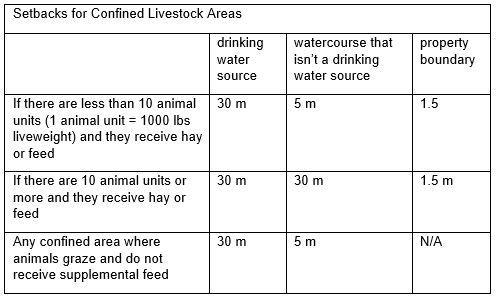
Seasonal feeding areas:
These are areas that are used for both cropping and seasonal feeding of animals. Typically, on forage fields where animals are located seasonally and provided supplemental feed. Make sure that on-ground feeding locations and mobile feeding bins are not placed near drinking water sources, watercourses, or the property line. Use the following setbacks: contained, as they must not enter a watercourse or cross a property boundary. - Piles should not be sited in low lying areas prone to flooding, in locations with standing water or saturated soil. - If your farm is in a high precipitation area (i.e. South Coast), cover any temporary piles of wood residues stored in the field from October 1 to April 1. - Be sure to keep temporary piles off of coarse-textured soil if you are in a vulnerable aquifer recharge area. These are typically soils that are deep and well to excessively drained sands or gravels.
• Permanent storage structure requirements:
- Ensure that any leachate is contained and runoff from outside the area is diverted away. - If you are in a vulnerable aquifer recharge area, a “protective base” is required as part of the permanent storage structure. A protective base is typically a concrete pad. A protective base is less commonly an engineered (compacted) soil liner, and most soils would not be considered a protective base.
Forage: Do now:
Records: If your operation has a land base of 5 acres or more, you require records for: ● The application of commercial fertilizers and other nutrient sources containing N and P, such as manure or compost – how much, what product, when, and where. ● Yields and soil test results (see below) for fields that are fertilized.
Wood residue (e.g., sawdust and hog fuel) storage requirements:
• For any storage of wood residue, there are minimum setback distances from the edge of the storage to water sources: 30 m to a drinking water source, and 15 m to a watercourse that isn’t a drinking water source. • Temporary field storage or permanent storage structure? - Temporary piles of wood residues are meant to be temporary (no longer than 12 months). If longer, permanent storage structure requirements apply. - Sites for temporary field storage should be changed: they must not occur in the same location again within a 3-year window. Otherwise, permanent storage structure requirements apply to the wood residue pile.

• Temporary field storage requirements
- Ensure that the materials in the pile and any contaminated runoff or leachate from the pile stays
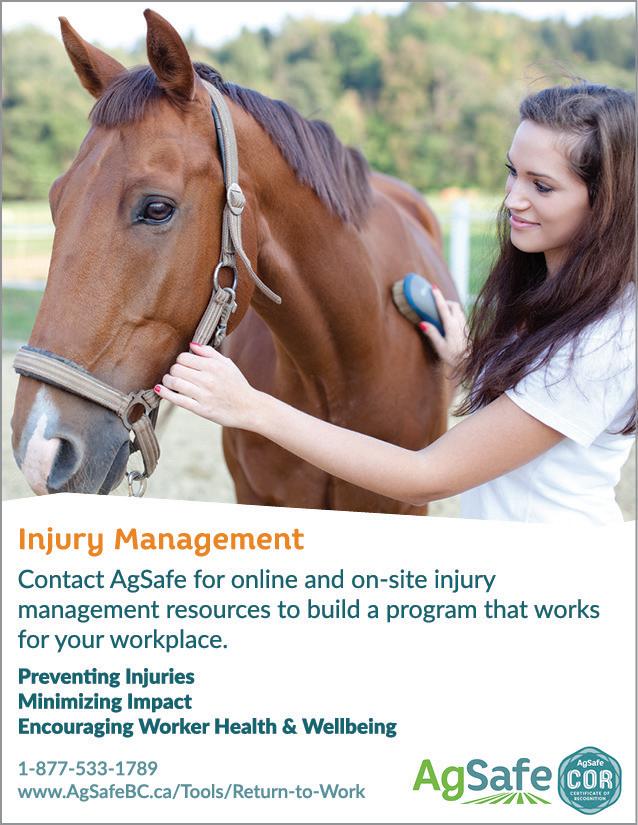
Soil testing: If your farm is 2 hectares (5 acres) or larger you are required to have soil test phosphorus and soil postharvest nitrate results from within the last 3 years for soils that receive fertilizers or other nutrient sources containing nitrogen and phosphorus, including compost or manure. This does not include areas that receive manure directly from livestock, only manure that is collected and applied to land:
● The post-harvest nitrate test is intended to quantify any residual nitrate left in the soil at the end of the growing season. Samples for nitrate should be collected to a depth of 30cm (12”) in the fall or early spring ● If the post-harvest nitrate test is 100 kg N/ha (25 ppm for a 30cm/12in sample) or over, the area needs to be sampled again the following year. ● Each sample for post-harvest nitrate should be representative of areas with similar management (crop, fertilizer applications, and irrigation) and soil. Fields or sections may be grouped if they are similar as long as all areas are sampled accordingly. See the Ministry of Agriculture’s website for more information and recommendations on soil sampling and testing.
Application of manure, fertilizer, or compost:
● Manure, fertilizer, or compost must not be spread on frozen or snow-covered ground. ● In high-precipitation areas, manure and other nutrient sources are not allowed to be applied during November, December, or January. ● In high precipitation areas a risk assessment needs to be completed in October, February, and March before any manure is land-applied. - The BC Application Risk Management tool can be used to do this - Manure, fertilizer, and other sources of nitrogen must not be applied in excess of the crop nitrogen requirement
AEM Code webpage: http://gov.bc.ca/AgriculturalEnvironmental-Management
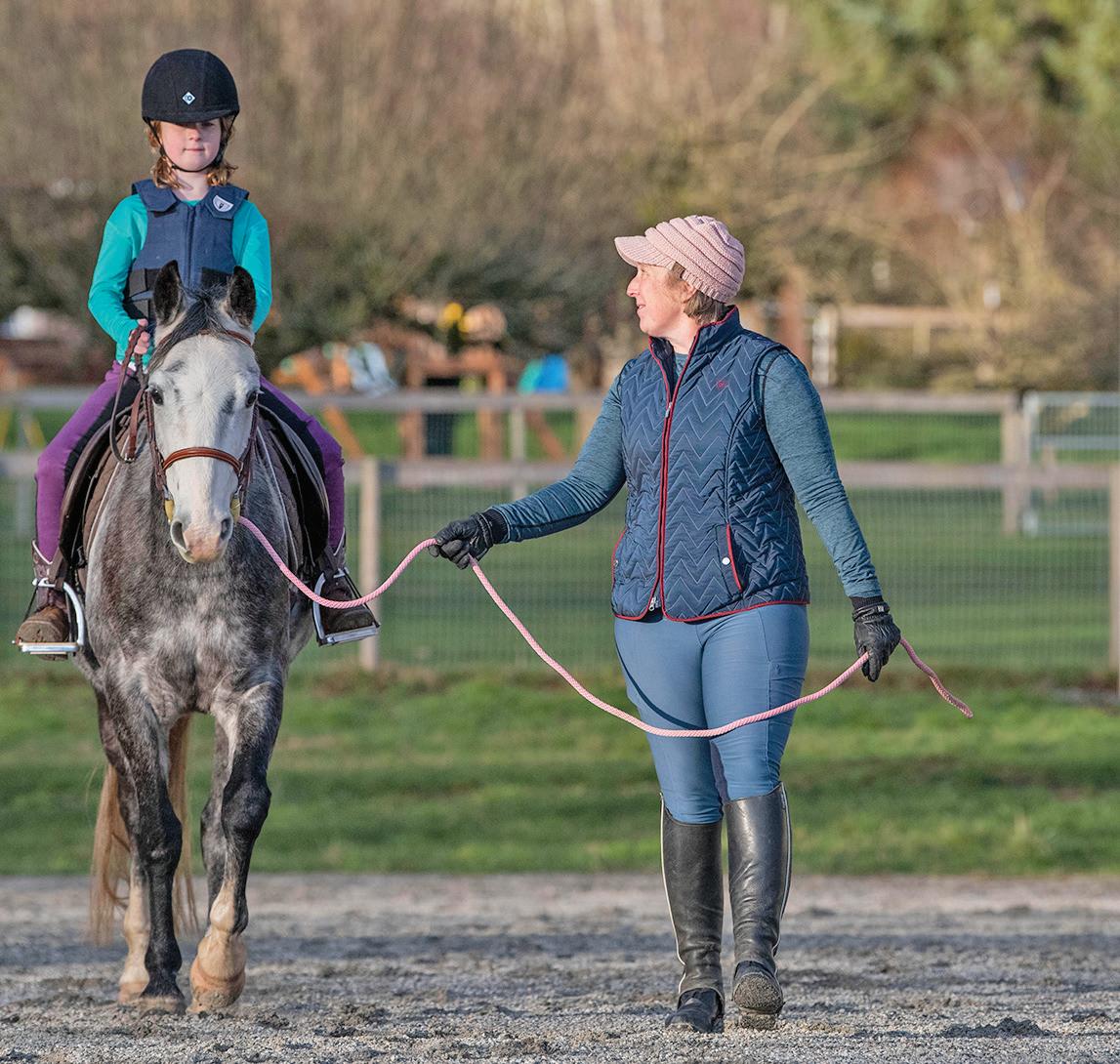

Footnote Farm in South Langley
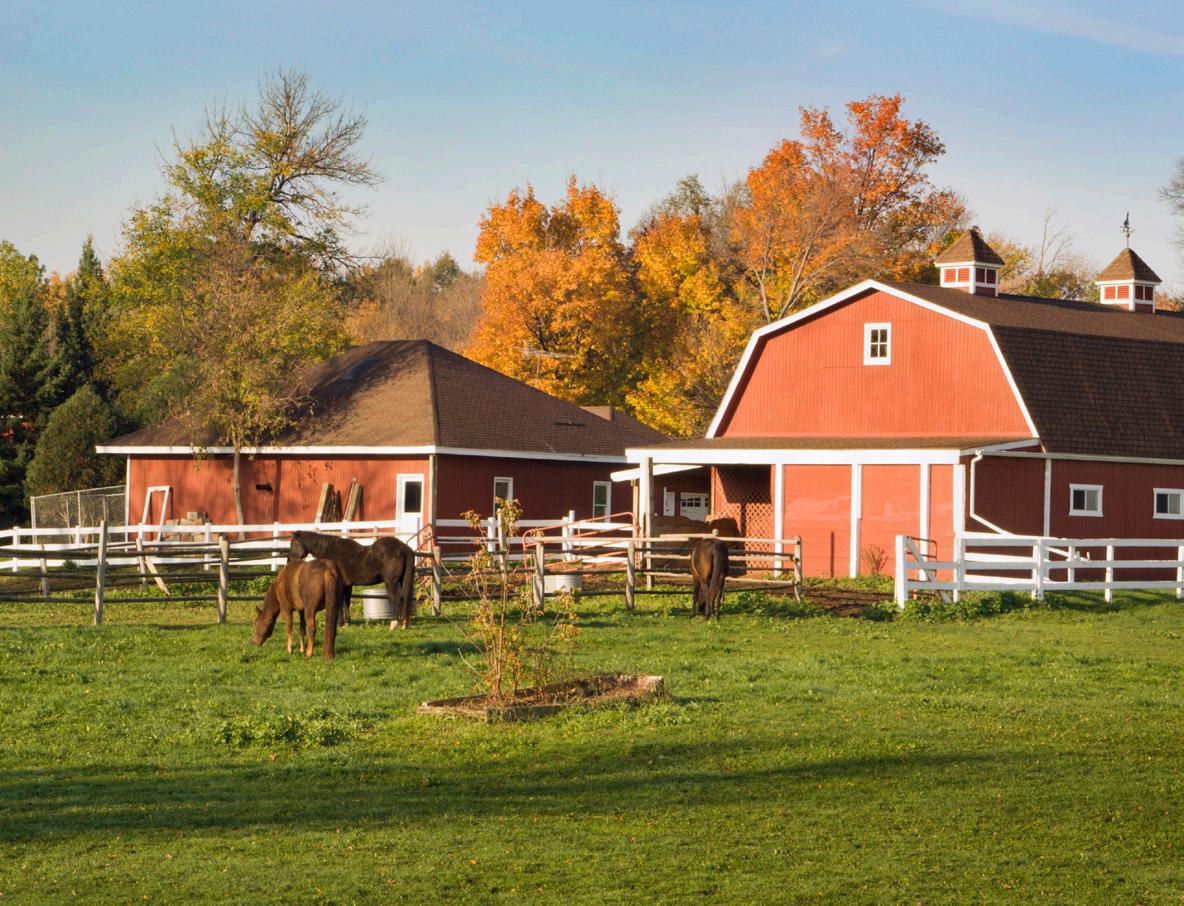
Riding Lesson Center Certified Instructors and great horses for all levels
Looking for the perfect thing to keep the little horse person in your life busy & learning? The Pony Tails Book of Coloring Fun & Horsey Facts is available NOW through the HCBC bookstore


Do you know a horse crazy kid?
Horse Council BC’s Pony Tails Kids Club is free and open to kids of all ages! Follow the adventures of Alice the Pony and her friends, Oliver, Panama and Howdy and learn all about horses and ponies.
BC Rider Wins the 2019

Emma Woo of Surrey, British Columbia, wins the 2019 National Championship Finals of J.C. Anderson Legacy Medal
The J.C. Anderson Legacy Medal, Jumper Equitation Medal Series was held at competitions across the country in 2019.Riders were tested at a 1:20m – 1:25m jumper height.
The top 10 athletes from each region were invited to compete during the National Final Series held at prestigious competitions throughout Canada. Each final round was judged in real-time at the competitions, as well as video recorded and judged by a panel of senior judges. $32,500.00 in athlete development bursaries were awarded, with Emma Woo, the National Champion from Surrey, BC, receiving a $10,000.00 bursary for future training and competition.
This program supported young Equestrian athletes under the age of 25 from across the country and was designed to help identify those who have the potential to become Canada’s next generation High Performance athletes. Funding for the program was graciously provided by the J.C. Anderson Family Foundation, and the J.C. Anderson Legacy Fund through the Calgary Foundation and Alberta Sport Connection Donation Program and administered by Alberta Equestrian Federation.
Sixteen-year-old Emma, rode her 8-year-old Zangersheide gelding, Hello Harry Z to the win. Emma has been riding with her coach Ashley Papalia of Papalia Training for the past 5 years.
Rider Spotlight
Horse Council BC was able to catch up to Emma and ask her a few questions about herself, her life as a rider, her coach and of course her horse, Hello Harry Z.
HCBC Hi Emma first of all congrats on your big win and thanks for taking the time to speak with us.
HCBC - How old were you when you first started riding?
Emma: I started lead line lessons when I was 6 years old.
along with early riding lessons. When I went to my first horse show, the excitement of winning a ribbon drew me in. Now, when I think about being a rider, it is the combined experience of training with my horse and competing as a team that is most important to me. Not only am I able to set goals, I am also able to reap the rewards of self improvement along the way. The best part about horseback riding is forming a strong bond and connection with my horse. I simply love horses, they make me feel happy and content.
Photo Credit Amanda Ubell
HCBC - Of all the sports out there, what made you want to be a rider?

Emma: On a normal day, I am in school from 8:30am to 3:00pm, I am in grade 11. After school, I go to the barn. I will either hack my horse, or have a lesson with my coach, Ashley Papalia. Once I am finished at the barn, I head home for dinner with my family and complete homework or study. It isn’t very exciting, but it is a routine that works for me.
HCBC - Now can you walk us through what a day at the horse show is like for you?
Emma: My coach has a motto, “the horses come first”, and this is how we treat our horses every day. At horse shows, we start the day early by feeding and watering the horses. Mucking stalls, hand walking, prepping and grooming horses take up the early morning hours. Once my horse is ready, we go out for a good morning hack to prep him. Upon returning to the barn, we usually go through a plan for the day with Ashley. Communication is key with our team of riders as we aim to help each other in and out of the show ring. Once I know my class times, I usually check the ring, learn my course, or walk the course. I spend time watching other riders in my class, it helps me plan out my track, anticipate turns and strides. After my classes, I tackle cleaning, icing and wrapping my horse. Horse shows are never boring, there is always a lot of work to be done in a day. I take time to eat, rest and enjoy myself in between competing and doing the work that needs to be done.
HCBC - What can you tell us about your coach, Ashley Papalia?
Emma: My coach is Ashley Papalia, I have been riding with her since 2014. Ashley is a fun loving, patient and supportive coach who I feel understands me not only as a rider, but as a person. I learn something new from her daily whether it is horse care or a riding technique, she never fails to educate me. Her passion for learning and self improvement is infectious and I have benefitted greatly from it. She strives for excellence in and out of the ring. She guides the development of young riders like me by emphasizing correct riding and horsemanship. With my goals in mind, Ashley looks for fun, new challenges for me like the JC Anderson Medal, the RMSJ Mini Prix, the Thunderbird Good Hands and Seat medal, the CET medal, the Jump Canada medal and many others. I feel these experiences have allowed me to grow not only as a rider but also as a person. She has been instrumental in helping me understand goal setting and achievement. She has taught me to learn from my failures, and not to take myself too seriously.
HCBC - What’s your favourite thing about horse shows?
HCBC - Tell us about your horse Hello Harry Z
Emma: Harry is a 9-year-old Zangersheide gelding. He is a playful, outgoing horse who loves hanging out with me at the barn. He has a good sense of humour and can be very cheeky. He is fun, brave and loves jumping, especially in the Grand Prix rings. He has an easy going personality and he is perfect for me.
HCBC - What’s your favourite food?
Emma: Sushi! Anytime, any day!
HCBC - What is Hello Harry Z’s favourite food?
Emma: Harry loves to eat, his favourite food is everything, but I think stud muffins really get him excited.
Emma’s first pony, Foxen’s Little Treat 2014 / Photo credit Nora Woo
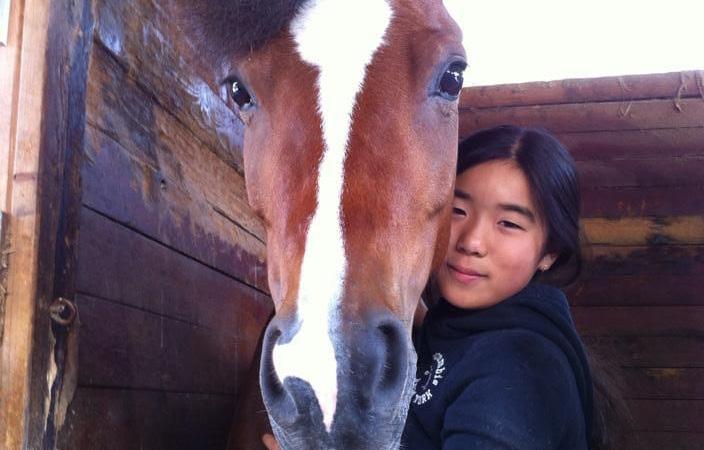
HCBC OK last question - What is your best advice to any young aspiring rider?
Emma: My best advice is to “keep moving forward”! In the last few years, I have learned so much from the horses I have ridden. Many of these lessons were difficult and discouraging. However, every day, I went back to the barn to try again, I was frustrated but committed to improve myself. Don’t be afraid to try new things, don’t be afraid to ask for help. With the help of my coach, team mates, and clinicians, I continue to learn new mental skills and riding techniques. This translates into better communication with my horse and together, we keep moving forward.

FOR SALE
29360 TOWNSHIPLINE ROAD, ABBOTSFORD, BC A 39.5 ACRE WORLD-CLASS EQUESTRIAN ESTATE IN THE HEART OF ABBOTSFORD


A rare opportunity to own a turn-key beautifully maintained property with equestrian facilities. This private complex offers an existing 3,632 square foot main building with a coach house and private residence, along with a 4-bay garage, a 10-stall fully-serviced barn, and an extensive indoor riding ring which are all set onto the rolling pastures and trails of the property’s private acreage.
Plenty of room to design & build your dream home.
For details, pictures and video visit:
cushwk.co/2PUg3jJ


604 683 3111
JORDAN SENGARA PERSONAL REAL ESTATE CORPORATION RON EMERSON LIAM BOULTBEE FOR MORE INFORMATION AND TO ARRANGE A PRIVATE TOUR CONTACT:






